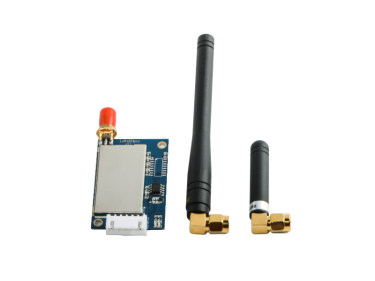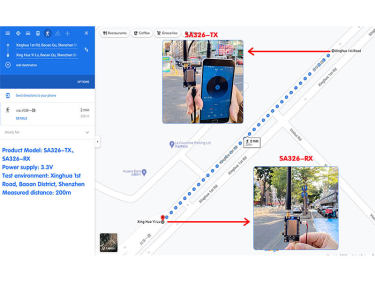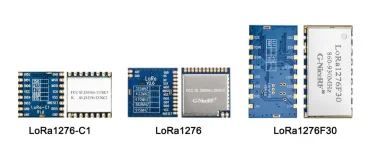Digital walkie-talkies do not require a network
Walkie-talkies with built-in digital and analog modules do not require a network connection. When walkie-talkies were invented, there was no concept of the internet. A walkie-talkie itself is a type of radio that can receive and send signals. For example, if walkie-talkies A and B need to establish contact, they do not need the help of any external devices or networks. As long as both ends can receive the radio waves emitted by each other, they can function normally. Even in remote areas where there is no modern technology, walkie-talkies can still work effectively.
This is the biggest advantage of walkie-talkies, and also one of the main reasons for its limited use. To increase the communication distance, the transmission power must be increased by the square of the distance. For example, if a power of two watts can transmit 20 kilometers, to transmit 40 kilometers, the power needs to be increased to eight watts. This will result in an increase in the amplitude radiation, volume, and weight of the machine.
Traditional walkie-talkies use analog digital signals, which are not essentially true digital communication technology, and therefore cannot meet requirements such as unlimited distance, digitalized cluster dispatch, and they cannot support cross-regional centralized management of informatized, group-oriented businesses, nor can they carry more digital value-added business software, etc.
Digital walkie-talkies designed using digital technology digitize voice signals and propagate them in the form of digital codes, that is, all modulation transmitted by the walkie-talkie is a digital signal. In addition, the functions of digital walkie-talkies are usually more powerful than those of analog walkie-talkies, the sound quality is clearer, and the standby time is longer.
The mobile phones we use now only require you to have a base station nearby, pay, and the work of transmitting information to a distance is done by the base station. Once you leave the network, you cannot be contacted. Walkie-talkies, however, are not subject to this restriction. They are economical and easy to use, and they can work normally whether in a desert prairie or in the vast sea. The fundamental reason is that it does not need a network.
Introduction to the digital walkie-talkie modules DMR818S and DMR828S: Wireless digital walkie-talkie module, the module has a built-in microcontroller, digital walkie-talkie chip and RF power amplifier circuit. This module can not only be compatible with the general analog walkie-talkie on the market, but also has the function of a digital walkie-talkie. The module provides a standardized serial interface, and the module's receive and transmit frequency and contacts and other parameters can be easily and quickly set through serial port commands. By externally connecting an audio power amplifier, microphone, speaker, etc. to this module, it can work as a small digital walkie-talkie.
The digital walkie-talkie module supports the following functions:
- Send confirmed/unconfirmed SMS communication, with preset SMS function;
- Voice encryption function, SMS encryption function;
- Support for all-call, group-call, and individual-call functions;
- Call prompts, support for caller and callee detection;
- Built-in emergency alarm function, remote monitoring function;
- Supports remote stun / activation function;
- Supports direct and relay voice and SMS applications. In addition, it also supports the CTCSS/CDCSS sub-audio setting function and squelch level setting function of the analog walkie-talkie module.
Digital walkie-talkie modules and wireless communication modules are widely used in logistics transportation, property security, shopping centers, hotels, large events, medical institutions, construction sites, industrial parks, and other walkie-talkie communication equipment.
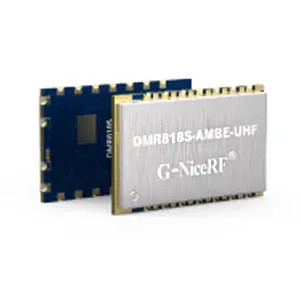
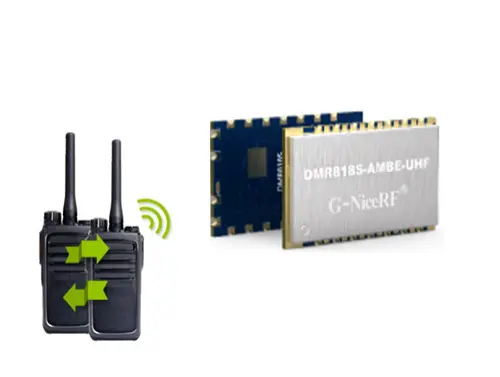
 +86-755-23080616
+86-755-23080616
 sales@nicerf.com
sales@nicerf.com
Website: https://www.nicerf.com/
Address: 309-314, 3/F, Bldg A, Hongdu business building, Zone 43, Baoan Dist, Shenzhen, China


